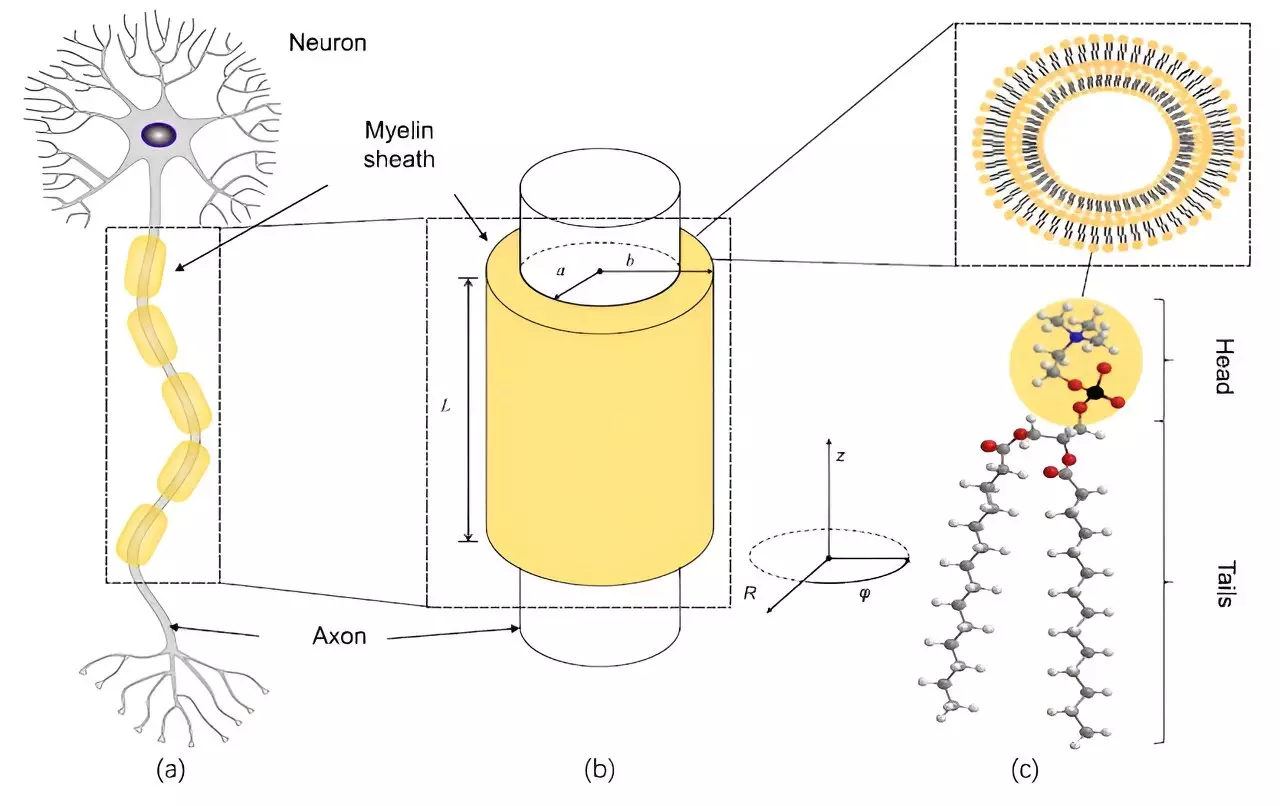Consciousness remains one of the most perplexing enigmas facing science, as researchers strive to peel back the layers surrounding this complex phenomenon. Despite leaps made in neuroscientific research, a definitive understanding of how consciousness arises from physical processes in the brain is still elusive. A particularly ambitious hypothesis has emerged, suggesting that quantum mechanics—specifically the phenomenon of quantum entanglement—may offer crucial insights into the workings of the mind. Recent findings from a research group in China open a new avenue for exploration, proposing that systems of entangled photons within the myelin sheath surrounding nerve fibers might facilitate rapid neural communication, thereby contributing to consciousness.
At the core of this discussion is the concept of quantum entanglement. Traditionally, neuron communication relies on electrical impulses that traverse axons—long nerve extensions that serve as the communication highways of the nervous system. The impairment of understanding this system has largely been attributed to the relatively slow transmission speeds of these signals, often deemed inadequate to account for the staggering synchronization present in neural assemblies. However, the Chinese researchers suggest that hidden within the myelin sheath that insulates these axons may lie entangled photons, which could revolutionize our understanding of speed and efficiency in neural signaling.
Chen and his colleagues have ventured into the complex yet fascinating domain of cavity quantum electrohydrodynamics to examine the environment created by the myelin sheath. They theorize that the myelin, essentially a lipid-rich insulation wrapped around neuronal axons, is capable not only of insulating but also of forming conditions conducive to quantum entanglement. By treating photons generated within this structure as quantum entities, they utilized quantum mechanical models to assess their interaction with the macromolecules present in the myelin sheath.
Myelin: More Than Just Insulation?
Historically, myelin has been understood solely in terms of its role in speeding up electrical impulses along axons. This insulating sheath comprises layers of fat, which provide not only insulation but also energy support for the operation of neurons. However, the findings from this research indicate that myelin may serve an additional function—facilitating the entanglement of photons as neural activity occurs. The scenarios proposed by this research raise questions about the classical model of synaptic communication and suggest a more intricate, layered reality wherein quantum phenomena could influence biological processes at a macroscopic level.
The research explores how the movement of energy within the tricarboxylic acid cycle generates a cascade of infrared photons. The interaction of these photons with the lipid molecules evident in the myelin could lead to the enhancement of entangled photon production. As this relationship unfolds, it could forge a link between quantum mechanics and biological functioning in ways previously unconsidered.
Neural synchronization is critical for a multitude of brain functions, including perception, action, and cognition. The conventional understanding of synchronization has largely relied on classical models of electrical signaling. However, if the hypothesis about myelin-generated photons is proven valid, it could potentially shift the paradigm surrounding fast neural communications. Quantum entanglement presents a mechanism whereby alterations to one quantum system instantaneously affect another, irrespective of the distance separating them.
This opens the door to intriguing possibilities: could quantum entanglement within myelin allow for instantaneous effects on various ion channels in neighboring neurons? If true, it suggests that processes could occur at speeds unattainable through classical signaling alone. The consequences could be profound for understanding neural processes and the very fabric of consciousness itself.
Amid the excitement surrounding these findings, it is essential to tread carefully when speculating on the implications for consciousness. Chen emphasizes that the current research is exploratory and primarily seeks to identify mechanisms that might explain neural synchronization without abruptly leaping to conclusions about a direct relationship to consciousness. Drawing links between such complex phenomena requires rigorous validation through further research.
In summation, the intersection of quantum physics and neuroscience presents an exhilarating frontier of inquiry, one that pushes our current understandings of consciousness and neural functioning. The potential ramifications of discovering entangled photons within the myelin sheath could illuminate areas of brain activity previously shrouded in mystery, offering insights that challenge established norms and ignite further scientific exploration. As this research progresses, it may well contribute to unraveling the deep mysteries of consciousness, merging disciplines, and expanding the frontier of human knowledge.

